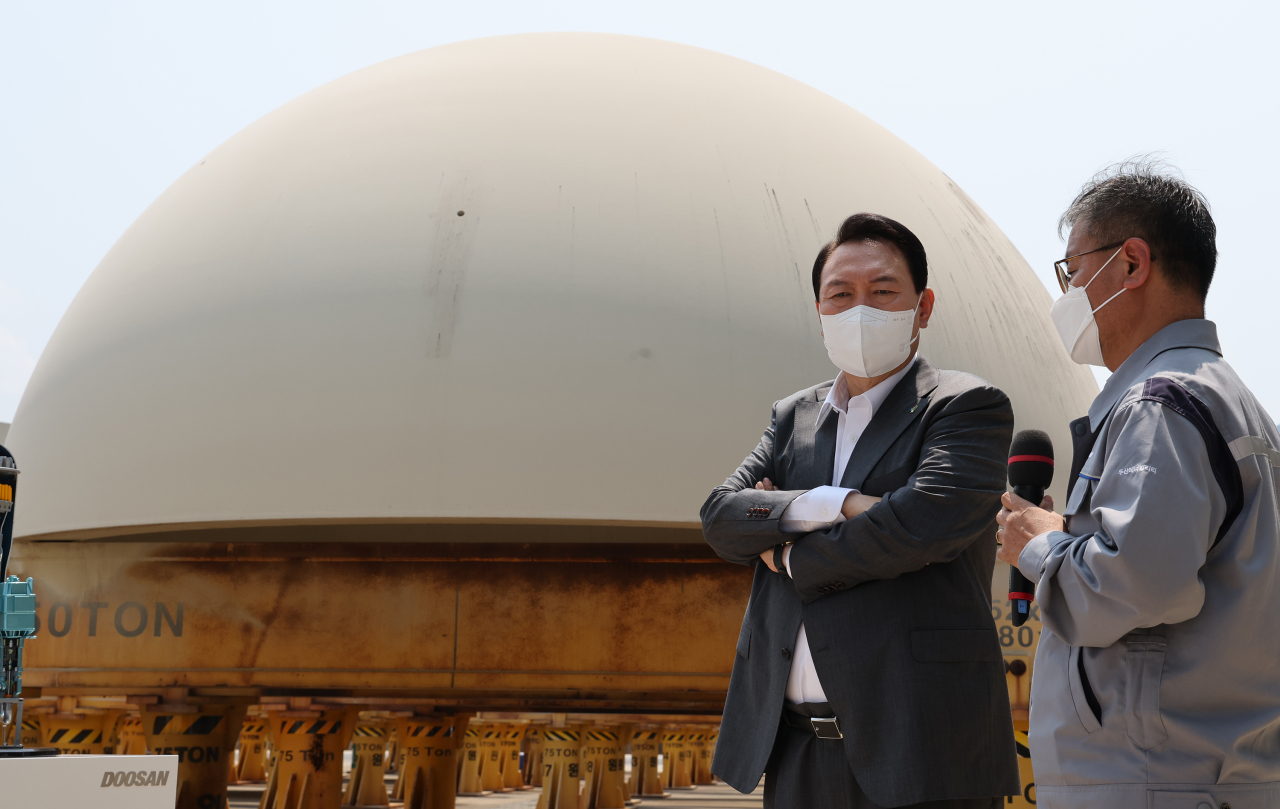[Contribution] Three requirements for Korea to embrace nuclear power for more sustainable future
By Korea HeraldPublished : July 12, 2022 - 14:55

The global energy industry is witnessing unprecedented turbulence triggered by supply shocks, inflation and geopolitical issues. In contrast to where we stood a few years ago with the big issues of sustainability, including electrification and decarbonization -- dominating the CEO agenda -- we have now shifted the focus onto diversifying supply security. There have been numerous announcements to pace the speed of energy transition as a way of boosting energy security. For instance, highly developed countries like Germany and Australia declared their plans to ramp up coal power plants to compensate for reduced gas supply from Russia.
Against this background, nuclear power has emerged and is being widely discussed as a potential alternative. While many countries have pledged to phase out nuclear power due to safety concern after the accident in Fukushima, its benefits of being carbon-free and highly efficient have not subsided. Also, the fact that nuclear power is much more stable, compared to wind and solar power that are dependent on weather conditions, engendered many to actively consider nuclear as a viable option to achieve net-zero goals under the Paris Agreement. To this end, the US and the EU have classified nuclear power under “green” or “clean” energy to meet decarbonization targets; Korea is actively following the same trend as the new government has embarked on a journey to pivot the country’s energy policy toward pro-nuclear.
This includes, and not limited to, the recommencement of construction of two nuclear power plants (Shin-Hanul No. 3 and 4) which was called off by the previous government, extension of the lives of existing nuclear power plants, development of Small Modular Reactor nuclear technology, and active promotion of overseas nuclear power plant related exports.
Given Korea’s technological and commercial leadership in nuclear power, there is no doubt that the country can secure a foothold in the global market, taking a leading position. Nevertheless, three requirements will have to be explicitly considered to help Korea find a pathway that is robust and successful from a longer-term perspective.
First is to reestablish strong materials, parts, and equipment ecosystem. Such ecosystem had previously been supported by the small and medium-sized enterprises but have weakened substantially due to bankruptcy and downsizing, which resulted from years of a nuclear phase-out policy that lowered nuclear power plant utilization and induced early retirements.
Revitalizing the ecosystem is critical to support construction of new power plants both domestically and through exports, because such materials, parts and equipment have been optimized around the Korean-type nuclear reactors. The nuclear power plant is a meticulous collection of hundreds of thousands of smaller components and having everything in tight sync is critical for performance and reliability. For example, there had been a study that showed how imported parts in Korean nuclear power plants have caused frequent failures, resulting in millions of dollars of losses. Having strong materials, parts and equipment also sets the foundation for generating successful overseas sales, as clients view this as evidence of long-term reliability. It is widely reported that many Korean SMEs in the nuclear space are on the brink of bankruptcy due to lack of orders and subsequent liquidity issues. Immediate relief programs need to be deployed as was the case for the US that announced a $6 billion bailout program in April this year to quickly save companies under financial distress.
Second is to expand into the upstream part of the value chain to gain secure access to uranium. Korea is entirely dependent on foreign source of enriched uranium, and this makes the country particularly vulnerable during the times of supply constraints. The country imports enriched uranium from Russia, Australia and Canada, paying $250 million each year (out of which Russia accounted for 33.8 percent of the supply last year). The price of uranium has recently soared (to around $60 per pound vs. $30 summer of 2021) and given that Russia owns a significant portion of the global uranium enrichment capacity, further supply instability and subsequent price hikes could be on the horizon. Countries like Japan and France have taken more proactive approaches in this context. For instance, Japan established a government-affiliated entity dedicated to securing the sourcing of important minerals, which includes uranium (Japan Oil, Gas and Metals National Corp.) and aligned the entity’s activities with the government’s Official Development Assistance and other diplomatic programs. As a result, Japan currently holds minority stakes in several Canadian and Australian mines. Similarly, France has the Orano group, a state-owned uranium development and sourcing company that has joint ventures and other investments across Kazakhstan, Uzbekistan, Niger and Canada.
Third is to advance safety-related technologies, including radioactive waste treatment. Considering the fact that Korea ranks within top five when it comes to producing the most nuclear power in the world, finding a sustainable solution for disposing nuclear waste is a must given the country’s future ambition. Currently, Korea has no safe and permanent location to store nuclear waste and all of them are deposited in temporary storage within nuclear power plants. Such nuclear waste requires continuous electricity supply for cooling and care to prevent radioactive leakage at nuclear plants -- which caused huge damages in Fukushima and Chernobyl. According to industry experts, much of the temporary storage space within Korean nuclear power plants will be full by the early 2030s, and this timeline could be accelerated if Korea ramps up nuclear power generation based on the new government’s plan. While there is no complete solution yet for nuclear waste treatment, countries like France and Finland have led the space by developing dedicated reprocessing and permanent storage facilities. Both countries have publicly discussed the topic for decades to reach an agreement and elicit public acceptance. The US is leading research on pyroprocessing, a technology to recycle nuclear waste which could also contribute to mitigating nuclear waste issues. Nuclear power is truly “green” and “clean” when there’s viable solutions to the hazardous wastes it generates.

The value of nuclear power is becoming increasingly pronounced for countries that face the dual objectives of decarbonization and energy security. It has many upsides to Korea given the country’s limited renewable power generation potential and large energy consumption. It is critical to consider the abovementioned requirements upfront to fully capture the benefits while making it economically, socially and environmentally sustainable in a longer term.
By Jae Jung and Will Kwon
Jae Jung is a partner and Will Kwon is an associate partner at McKinsey & Co. Views expressed in the article are their own. -- Ed.
-
Articles by Korea Herald








![[KH Explains] Hyundai's full hybrid edge to pay off amid slow transition to pure EVs](http://res.heraldm.com/phpwas/restmb_idxmake.php?idx=644&simg=/content/image/2024/04/18/20240418050645_0.jpg&u=20240419100350)







![[From the Scene] Monks, Buddhists hail return of remains of Buddhas](http://res.heraldm.com/phpwas/restmb_idxmake.php?idx=652&simg=/content/image/2024/04/19/20240419050617_0.jpg&u=20240419175937)

![[KH Explains] Hyundai's full hybrid edge to pay off amid slow transition to pure EVs](http://res.heraldm.com/phpwas/restmb_idxmake.php?idx=652&simg=/content/image/2024/04/18/20240418050645_0.jpg&u=20240419100350)

![[Today’s K-pop] Illit drops debut single remix](http://res.heraldm.com/phpwas/restmb_idxmake.php?idx=642&simg=/content/image/2024/04/19/20240419050612_0.jpg&u=)